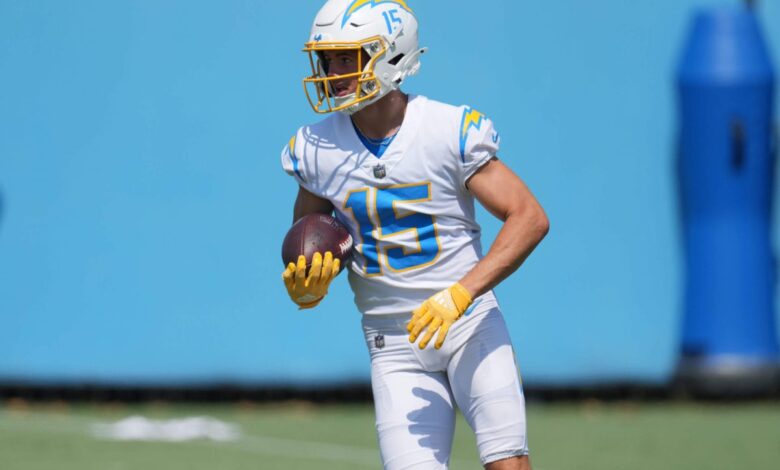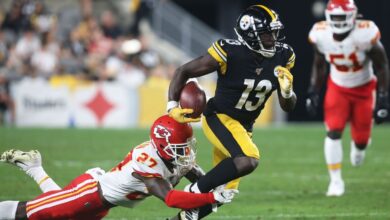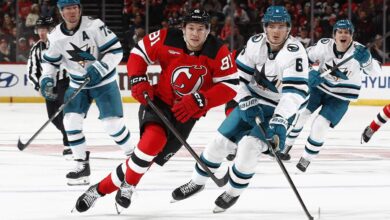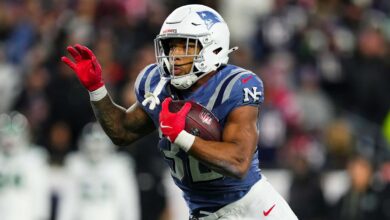Do rookie receivers produce better late in the season, peaking during the fantasy football playoffs?

Last week, I wrote an article about false fantasy narratives. The top one: “Rookie receivers win fantasy football championships.”
I noted that receivers picked in the top 10 overall of NFL drafts this century were bad bets to have impactful fantasy seasons. About 29% were at least modest hits, 35% busts, and the rest were somewhere in between. And, again, this was the cream of the prospect crop.
So the case is closed, right? Well, in the comments, reader Alex T. posted, “On rookie wide receivers, I have always thought the idea was that they grew into their role and by end of season, in the fantasy playoffs, their (scoring) is peaking, hence they win championships. No idea if that’s the case, do you have any easy to hand stats on that?”
That’s a great question, but this belief that’s been expressed by many has always struck me as BS. I began researching an answer that would pass my fairness and clarity tests. Via TruMedia, I think I solved the problem. Since 2020, I pulled only rookie WRs drafted in the first and second rounds in the actual NFL draft and looked at the group’s per-game fantasy stats the first 10 games of their rookie year vs. their per-game stats in games 11-to-17.
If I’m correct, and the theory is bunk, there will be no improved scoring for the group. If the theory is correct, then the group performance would be significantly better later in their rookie seasons. That’s the critical time frame down the stretch of our fantasy season and into our fantasy playoffs.
Looking at per-game stats rather than raw points solves the problem of confusing an increase in mere playing time with improved performance. After all, we’re prioritizing the rookies in our fantasy drafts who have real-life draft capital and who are expected to play right away. The “linear progression theory,” to coin a phrase, says that, on top of that, they’ll continually improve through December.
The five-year sample is 41 receivers since 2020 who met our NFL draft requirements as first- or second-round picks.
Here are the results:
The group average for games No. 1-10 was 8.5 games, 29.4 catches, 382 yards and 2.2 TDs, which per-game is 3.5 catches-45 yards-0.31 TDs.
In games No. 11-17, the same group averaged 5.9 games, 20.4 catches, 258 yards, 1.6 TDs, which per game is a virtually identical 3.5 catches, 44 yards and 0.27 TDs.
That’s 9.86 points per game through the 10 games for the rookie group sampled, and 9.52 points per game in games 11-17.
Remember, we don’t care about what feels true, we only care about what actually is true. There’s no evidence that rookie wide receivers generally should be expected to get better as their rookie seasons progress.
I anticipate some of you noting exceptions in the comments. “Rashee Rice was so much better at the end of the season….” Fine. But if there was no general effect, we would still expect someone to perform much better later than earlier. Just like if there was a general trend that rookie receivers got better, we wouldn’t junk the concept because some receivers didn’t, or even got worse.
Are there exceptions? Of course. But exceptions don’t prove or disprove the rule. If rookie WRs got better down the stretch of our seasons, we’d see the group trend. We don’t. I can speculate why. Maybe these rookies hit a wall because they’ve never played as many games in a season. Maybe they’re more broken down physically later in the year and don’t know how to play through that like veterans. Maybe defenses make adjustments to their strengths and they are not savvy enough yet to counter that. The bottom line is there was a reasonable theory posited — first-year players get better as the season progresses. It seems so obvious, few have bothered to test it for proof. Finding none at this moment doesn’t mean it’s not true. An absence of evidence isn’t evidence of absence… and all that. But we should not pay for it.
Who are we talking about this year in drafts and what is their ADP over the weekend at the NFFC? Here are the first- and second-round draft picks back in April and where they went in 70+ fantasy drafts this past weekend.
- Marvin Harrison Jr. (Cardinals, WR8)
- Malik Nabers (Giants, WR19)
- Rome Odunze (Bears, WR41)
- Brian Thomas Jr. (Jaguars, WR44)
- Xavier Worthy (Chiefs, WR37)
- Ricky Pearsall (49ers, WR76)
- Xavier Legette (Panthers, WR70)
- Keon Coleman (Bills, WR48)
- Ladd McConkey (Chargers, WR45)
- Ja’Lynn Polk (Patriots, WR66)
- Adonai Mitchell (Colts, WR62)
I suspect that at least some of the draft capital put into Harrison and Nabers is on the expectation that they’ll be peaking down the stretch of our fantasy seasons. And we’ll hear that if their starts aren’t as illustrious as their price demands.
I anticipate the question about rookies who were drafted as highly as Harrison and Nabers. So here are just the top 10 overall NFL draft picks since 2020. It’s only five players, so does it mean anything? Probably not. But they averaged 13.0 PPR PPG in games 1-10 and 14.2 PPR PPG games 11-17. The group is Ja’Marr Chase, Garrett Wilson, Drake London, Jaylen Waddle and DeVonta Smith. That’s 9% better on average. But, again, if it was true generally, it would be true of the bigger sample, not just the smaller one. But I note it for the record.
(Top photo of Ladd McConkey: Kirby Lee-USA TODAY)
Source link




